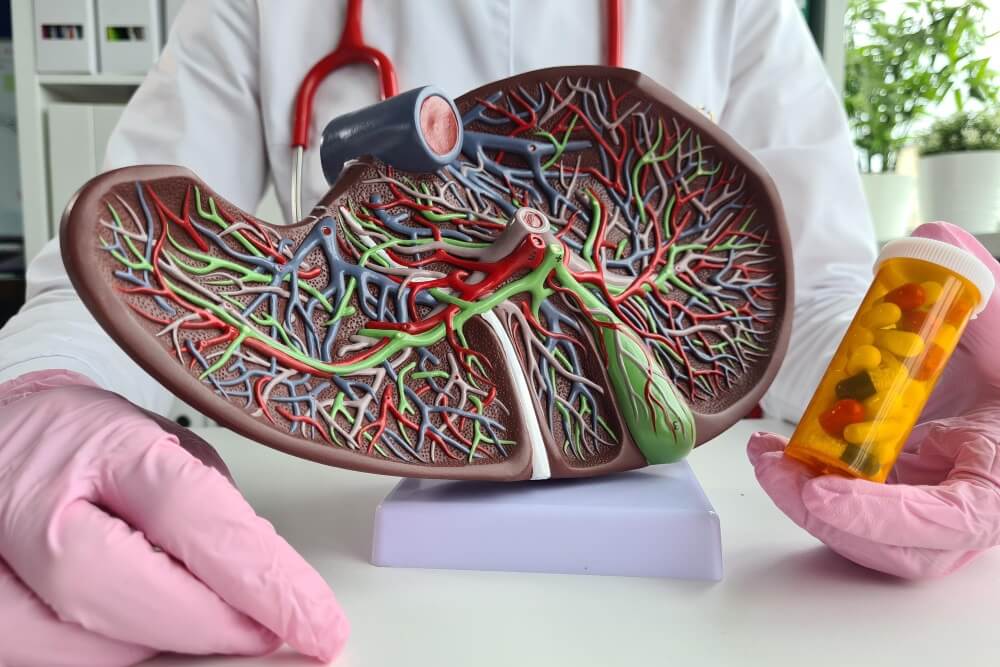Liver Tumors
Liver cancer is the uncontrollable growth of abnormal liver cells, and there are several types of liver tumors, including the following:
Primary Liver Tumors
This is one of the most common types of liver cancer and often results from long-term liver cirrhosis.
Secondary Liver Tumors
These usually occur when cancer cells spread through the lymph glands or blood from another existing cancerous tumor in the body to reach the liver, where a new secondary tumor develops.
Symptoms of Liver Tumors
Usually, there are no symptoms in the early stages of the disease. However, as the disease progresses, the following may occur:
- Jaundice, meaning yellowing of the skin or whites of the eyes.
- Pain in the upper right side of the abdomen alongside swelling or bloating in this area.
- Dark-colored urine.
- Pale stools.
- Loss of appetite.
- Nausea.
- Fatigue.
- Unexplained weight loss.
Kidney Tumors
Kidney cancer usually develops in very small tubes in the lining of the kidney, and this type of cancer is considered highly curable if treated in its early stages.
Symptoms of Kidney Cancer
These include the following:
- Noticing blood in the urine.
- Pain in the side.
- Feeling a mass in the side or abdomen.
- Sudden weight loss without a clear reason.
- Fever.
- High blood pressure.
- Increased calcium in the blood.
- Night sweats.
Treatment of Liver and Kidney Tumors using Interventional Radiology
Interventional radiology is an effective alternative to surgery in treating liver and kidney tumors. Dr. Farid al-Adham has successfully treated many patients with liver and kidney tumors using interventional radiology through the following methods:
Thermal Ablation by Radiofrequency Waves using Interventional Radiology
This is an advanced therapeutic technique that can treat small liver tumors, no larger than 4 cm, located in accessible areas. The doctor directs radiofrequency waves at the tumor, heating the cells and then destroying the cancerous tissue immediately.
Microwave Ablation through Interventional Radiology
An exclusive needle releases electromagnetic microwave waves, which heat and destroy the tumor. This technique can be used to treat tumors up to 5 cm in size, which are difficult to treat with thermal ablation.
Arterial Injection through Catheterization
This treatment may be effective in destroying tumors larger than 5 cm or if the tumors are multiple. It involves injecting chemotherapy and special substances gradually over 15 days through catheterization. These substances prevent blood flow to the area, while chemotherapy helps eliminate and eradicate the tumor.
Treatment with Radioactive Particle Injection
This treatment, which is considered safer than conventional radiotherapy, involves injecting radioactive particles into the liver arteries through catheterization to destroy the tumor by reducing blood flow and damaging the liver tumor's DNA.

